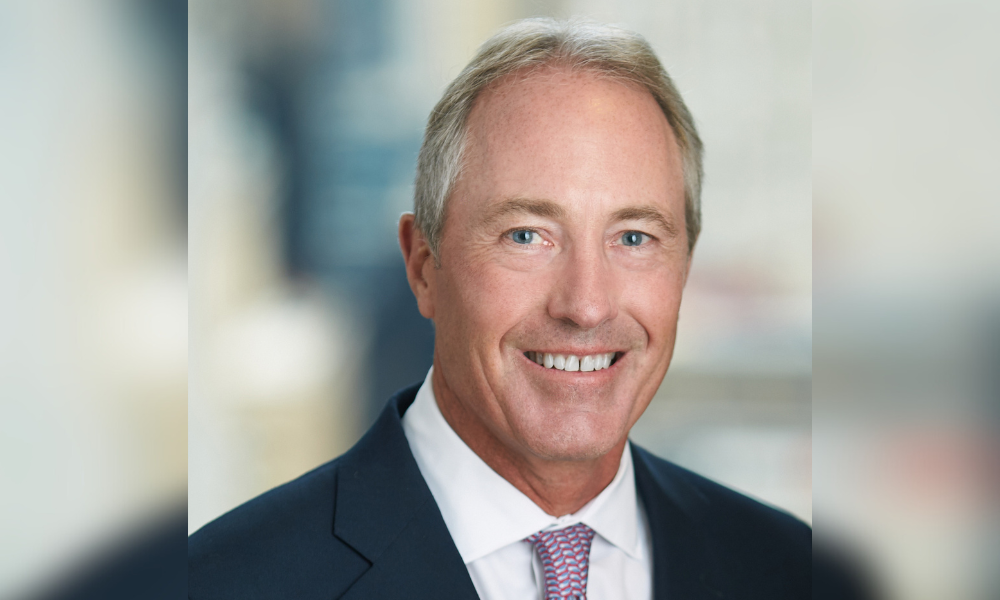Guy Carpenter chair David Priebe on what’s on the mind of the reinsurance

Guy Carpenter chair David Priebe on what’s on the mind of the reinsurance | Insurance Business Canada
Reinsurance
Guy Carpenter chair David Priebe on what’s on the mind of the reinsurance
Has the sector adequately addressed, priced and managed its casualty portfolio?
Reinsurance
By
Mia Wallace
What’s on the mind of the reinsurance market? The recent Rendez-Vous de Septembre (RVS) in Monte Carlo offered a timely snapshot ahead of the 1/1 renewal period.
Offering an overview of the mood on the ground, Guy Carpenter chair David Priebe (pictured) highlighted the “constructive” phase today’s market is in, with key players looking to support each other in creating a sustainable environment.
“What makes this year refreshing is that the conversations tend to be about the specific topics and issues that are important to each insurance company and reinsurer,” he said. “They’re very bespoke and very individually focused. From the reinsurer’s point of view, it’s all about how to continue to build partnerships with specific ceding companies. From the ceding company’s perspective, it’s about how to engage more deeply and have a more balanced level of support from reinsurers on their programs.”
The conditions of the last few years have enabled many reinsurers to restructure their reinsurance offerings – both from a structural and a pricing standpoint – in a way that will drive sustained profitability. So, for them, the focus is on retaining current levels. Meanwhile, cedents are likely going to be asking for support in certain areas, whether that’s greater tail protection or in managing some of the continued loss frequency taking place within their higher net retention.
Headwinds and tailwinds facing the reinsurance sector
On the headwinds and tailwinds facing the market, Priebe looked at the complexity of the macro-environment. Identifying some of the key drivers underpinning this uncertainty, he highlighted the role of increasing geopolitical instability, economic and social inflation, and how climate change may impact global loss activity. On a more positive note, however, there are signs of economic inflation abating while the conditions have led to extremely healthy reinsurer returns, and adequate capacity and capital.
“Capital has rebounded. Capital providers have a renewed appetite for underwriting rigor, and the maintenance of that rigor,” he said. “The other degree of confidence is stemming from how reinsurers have re-shifted the capacity and pricing to move their offering away from the more volatile loss frequency areas, to deeper in the tail risk.
“The other topic being discussed is casualty loss development and social inflation, and whether we have adequately addressed that, priced for that and correctly managed our portfolios from a primary insurance point of view. Our view is that the answer is ‘yes’ to that question. But it’s a question we need to keep an eye on and make sure that we keep calibrating to adjust for what may continue to develop.”
Outlining some of the client segments most impacted by these market conditions, Priebe touched first on how the property market was performing. Overall, the market is in a strong position having been recalibrated and re-priced for, but there’s still a gap between the primary and the reinsurance market in terms of addressing the pressure on the primary market to carry perils – including severe convective storm, wildfire, flood and winter weather – where losses are accelerating.
“I think the primary market is working really hard to deal with those losses, but they have to manage that within their regulatory environments,” he said. “In the United States, we’ve been having lots of discussions with state regulators and politicians about the affordability, as well as the availability of insurance.
“While the reinsurers have moved away from that space, I think you’ll see more pressure on them to help, maybe with multi-year, spread-loss solutions to bridge the gap between current pricing to price adequacy. That’s assuming the regulators recognize the need to allow the market to adjust and to start implementing more mitigation strategies to manage losses.”
What’s driving conversations on property?
The emphasis on the property side at the moment is to work on dealing with the emerging loss trends resulting from perils other than hurricanes in America, and to continue creating healthy dialogue with the regulators involved in that conversation. On the casualty side, he said, the focus is on pricing adequacy, where loss trends are going, and whether the market will see more or less of the ‘nuclear’ litigation verdicts that have made headlines in recent months.
“That’s where I think the conversation with the majority of reinsurers will be about how we can dig deep into the numbers together,” Priebe said. “It’s about having a constructive dialogue about what they’re seeing on their book, what they’ve done to re-underwrite their book, and what we’re seeing – and whether we’re seeing the same thing? That will help us arrive at a common understanding, so we have a basis on which to trade forward. That’s pretty much what took place last year and I think it will continue to take place as we go forward.”
Looking across the sector at RVS, Priebe said he sees a “strong, healthy market” where reinsurers are maintaining a thoughtful and rigorous approach to doing business. “We don’t see people chasing market share,” he said. “We see people wanting to grow but they want to do that on a sustained, thoughtful, profitable basis.
“Then we see our primary carriers being very thoughtful and rigorous about portfolio management and limit deployment. And they’re trying to get in front of some of these emerging issues in order to develop greater understanding of those risks and ensure they’re reflected in their pricing, their limits, their coverage offerings, and their engagement with their stakeholders – be that their customers, regulators or ratings agencies. So, all the way around, it’s very pleasing to see how the market is managing itself.”
Keep up with the latest news and events
Join our mailing list, it’s free!






